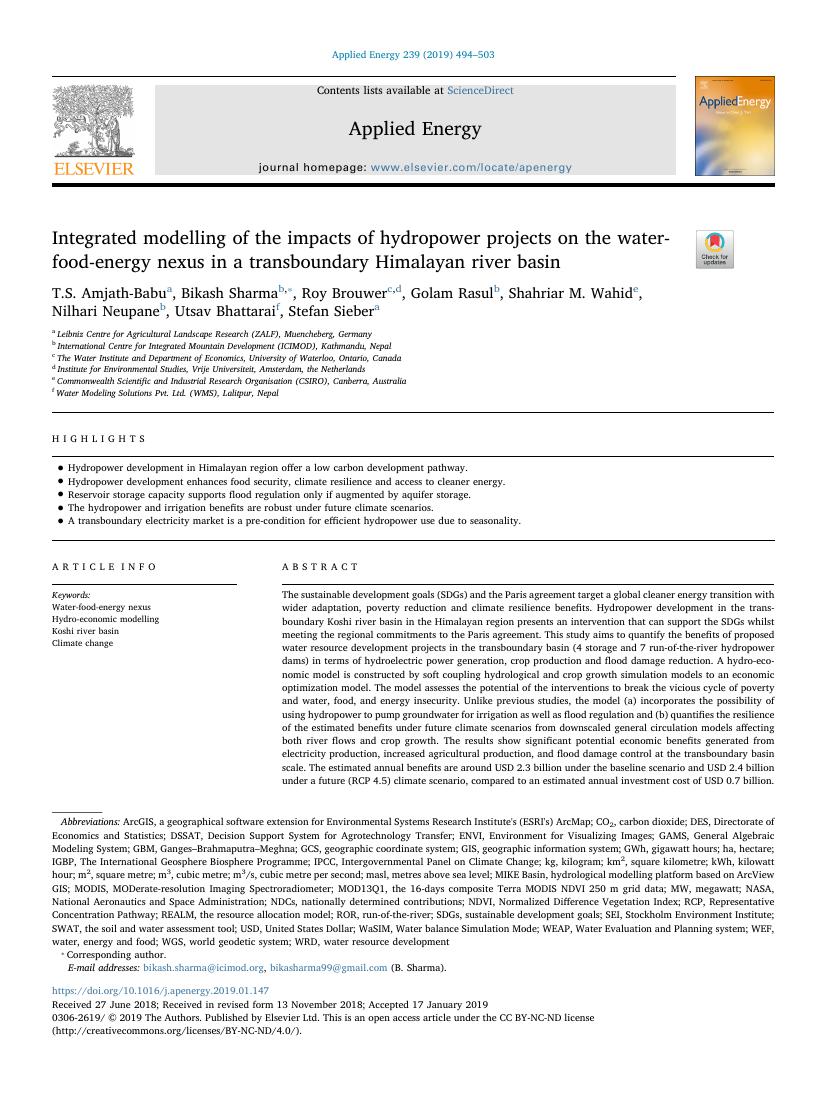The sustainable development goals (SDGs) and the Paris agreement target a global cleaner energy transition with wider adaptation, poverty reduction and climate resilience benefits. Hydropower development in the transboundary Koshi river basin in the Himalayan region presents an intervention that can support the SDGs whilst meeting the regional commitments to the Paris agreement. This study aims to quantify the benefits of proposed water resource development projects in the transboundary basin (4 storage and 7 run-of-the-river hydropower dams) in terms of hydroelectric power generation, crop production and flood damage reduction. A hydro-economic model is constructed by soft coupling hydrological and crop growth simulation models to an economic optimization model. The model assesses the potential of the interventions to break the vicious cycle of poverty and water, food, and energy insecurity. Unlike previous studies, the model (a) incorporates the possibility of using hydropower to pump groundwater for irrigation as well as flood regulation and (b) quantifies the resilience of the estimated benefits under future climate scenarios from downscaled general circulation models affecting both river flows and crop growth. The results show significant potential economic benefits generated from electricity production, increased agricultural production, and flood damage control at the transboundary basin scale. The estimated annual benefits are around USD 2.3 billion under the baseline scenario and USD 2.4 billion under a future (RCP 4.5) climate scenario, compared to an estimated annual investment cost of USD 0.7 billion. The robustness of the estimated benefits illustrates the climate resilience of the water resource development projects. Contrary to the commonly held view that the benefits of these proposed projects are limited to hydropower, the irrigation and flood regulation benefits account for 40 percent of the total benefits. The simulated scenarios also show substantial irrigation gains from the construction of the ROR schemes, provided the generated power is also used for groundwater irrigation. The integrated modelling framework and results provide useful policy insights for evidence-based decision-making in transboundary river basins around the globe facing the challenges posed by the water-food-energy nexus.
